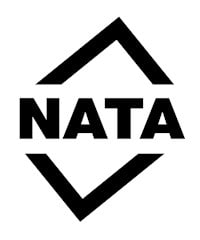Camfil's NATA accredited facility can perform HEPA filter integrity testing either with DOP or DPC methods, to the following Australian Standards:
- AS 1807.4.4 – Determination of integrity for terminally mounted HEPA Filter installations.
- AS 1807.7 – Determination of integrity for non-terminally mounted HEPA Filter installations.
- AS/ISO 14644.3 – Method B7 - Installed filter system leakage test
- AS/ISO 14644.3 – Method B7 - Upstream aerosol challenge for installed filter system leakage scan test with an aerosol photometer
- NSF/ANSI 49 Biosafety Cabinetry Certification (Annex F.5) HEPA Filter Leak Test
The HEPA filter integrity test is typically performed on supply air or exhaust air HEPA filters using a photometer to scan the filter surface for pinhole leaks that could allow the transmission of contaminant particles that would be unacceptable in a critical application. To perform testing, adequate access needs to be available to physically view and scan the HEPA face.
The most-common onsite HEPA integrity test method is the Cold DOP test, as described in AS1807.4.4 and 1807.7.
At the conclusion of our comprehensive testing, you will receive a detailed analysis report and a NATA accredited certificate of compliance to verify HEPA filter integrity as per Australian Standard specifications.
When should HEPA filters be tested?
HEPA filter testing by NATA accredited testing agents is necessary to verify they are installed correctly and validate performance.
- On site, upon installation and/or commissioning, prior to use
- After any mechanical maintenance
- Prior to filter replacement (to confirm performance of old filter prior to removal)
- After filter replacement (to confirm performance of new filter prior to use)
- After re-location of clean work stations or safety cabinets
- Re-tested at least annually
- Re-tested as required by appropriate regulatory authority
- In special circumstances, such as a significant change in the work program, or where impaired operation is suspected
For your convenience, our technicians can install and test new HEPA filters during the same site visit. For more information, visit our HEPA filter replacement service page.
HEPA filter supply air applications
HEPA filters are typically used to supply clean air to a range of hospital, pharmaceutical, food processing and manufacturing clean room areas where terminal HEPA filtration systems and unidirectional laminar flow or ultra clean ventilation systems (UCV’s) are located.
Important considerations for the testing of HEPA filters in supply air applications:
- Access is required to the relevant air handling unit related to the HEPA filter to be tested, so the test aerosol can be introduced.
- The air system should be operating as normal for the duration of the HEPA test, so the introduced test aerosol will be pulled through the HEPA filter.
- Access is also required to the air output side of the HEPA filter, so that a NATA technician is able to view and scan the HEPA filter surface at 25mm from the installation for traces of the test aerosol.
HEPA filter exhaust air applications
HEPA filters are used to contain contaminants from being discharged to outside or other spaces within high risk physical containment or quarantine containment facilities through exhaust HEPA filtration systems.
Important considerations for the testing of HEPA filters in exhaust air applications:
- Access is required to the air off side of the HEPA filter (within the exhaust duct), so that a NATA technician is able to view and scan the HEPA filter surface at 25mm from the installation for traces of the test aerosol.
- Access to the exhaust duct via access panel may cause a decrease in air pressure within the exhaust stream, affecting the required flow of test aerosol that is pulled through the HEPA. In this instance it is sometimes necessary to use blower fans to provide a flow of air across the filters
- In most cases, decontamination of the exhaust HEPA filtration system (HEPA housings / boxes) is required prior to testing. For more information, visit our decontamination fumigation services page.
